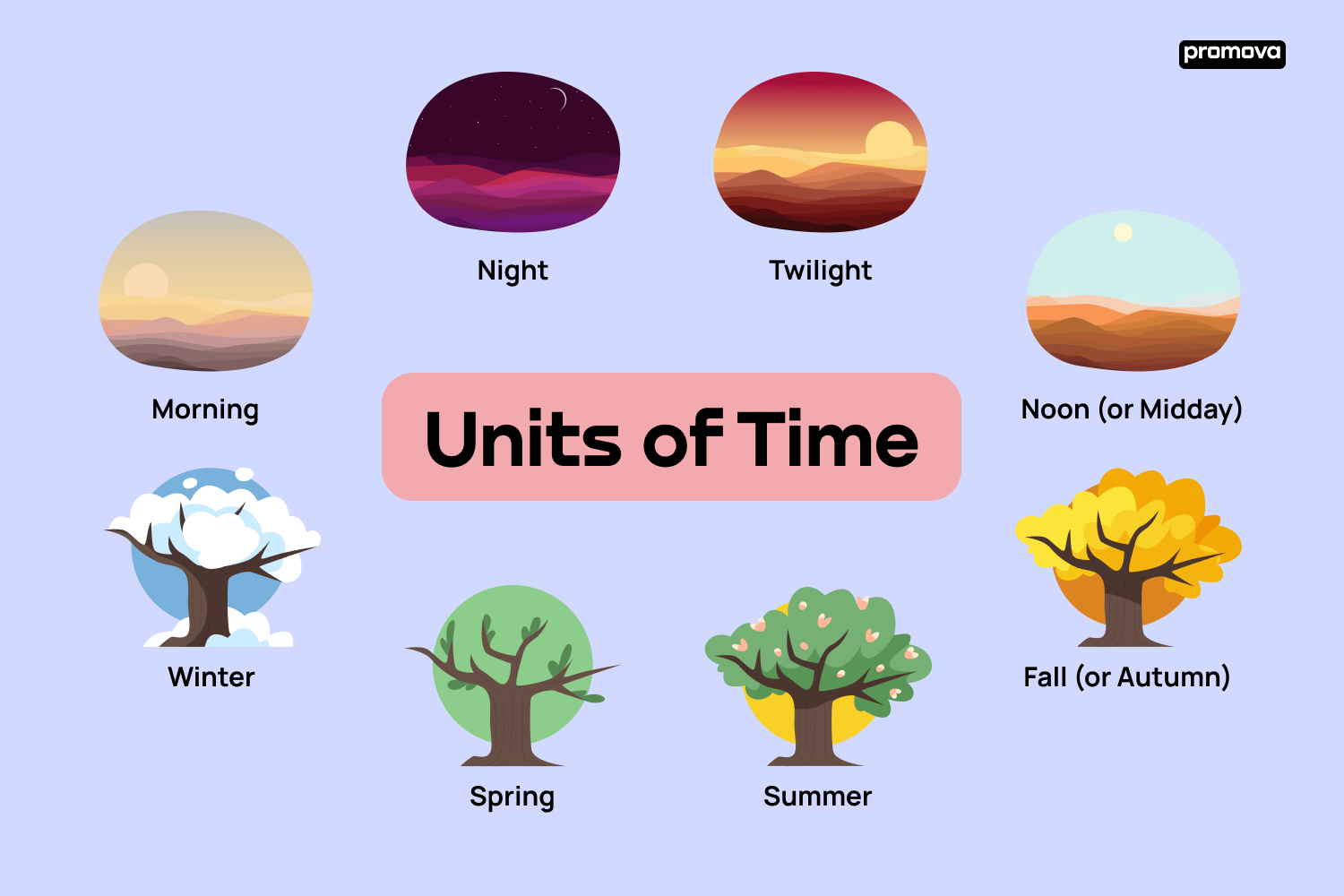Exploring Units of Time in English
Contents
As a language learner, understanding units of time is essential for effective communication and navigating daily life. 
Days of the Week
In this section, we will explore the days of the week. Understanding the days of the week is essential for effective communication, scheduling, and organizing our lives and activities.
- Monday: The first day of the week.
- Tuesday: The second day of the week.
- Wednesday: The third day of the week.
- Thursday: The fourth day of the week.
- Friday: The fifth day of the week.
- Saturday: The sixth day of the week.
- Sunday: The seventh day of the week.
Armed with this knowledge, you'll be able to effortlessly plan your schedules and engage in conversations about specific days.
Months of the Year
By familiarizing yourself with the months of the year, you'll be better equipped to discuss birthdays, holidays, and various time-related events.
- January: The first month of the year.
- February: The second month of the year.
- March: The third month of the year.
- April: The fourth month of the year.
- May: The fifth month of the year.
- June: The sixth month of the year.
- July: The seventh month of the year.
- August: The eighth month of the year.
- September: The ninth month of the year.
- October: The tenth month of the year.
- November: The eleventh month of the year.
- December: The twelfth month of the year.
Now you understand the months of the year in English and can confidently discuss and plan activities throughout the year.
14
Seasons
In this section, you will explore the four seasons and uncover the language used to describe them.
- Spring: The season between winter and summer, known for blooming flowers and warmer temperatures.
- Summer: The warmest season of the year, characterized by longer days and higher temperatures.
- Fall (or Autumn): The season between summer and winter, marked by falling leaves and cooler weather.
- Winter: The coldest season of the year, associated with snow, cold temperatures, and shorter days.
These terms allow you to discuss weather patterns, plan outdoor activities, and describe the overall atmosphere during different times of the year.
Time of Day
Whether you're discussing daily routines, scheduling appointments, or planning activities, knowing the language to express specific times is essential. Here are the commonly used terms to describe different parts of the day:
- Morning: The period of time between dawn and noon.
- Noon (or Midday): The time when the sun is at its highest point in the sky.
- Afternoon: The time between noon and evening.
- Evening: The period of time between late afternoon and night.
- Night: The period of darkness between sunset and sunrise.
- Dawn: The early light that appears in the sky before sunrise.
- Midmorning: The time between morning and noon.
- Evening: The period between late afternoon and nightfall.
- Twilight: The period of diminishing light between sunset and darkness.
- Midnight: The middle of the night, precisely 12 o'clock at night.
Armed with this knowledge, you can now confidently express specific times throughout the day. Keep practicing and incorporating these expressions into your daily conversations to sound more fluent in English!
Units of Time
In this segment, you will uncover the various units of time. Understanding these units is also vital for expressing durations, scheduling events, and discussing the passage of time.
- Second: A measurement of time equal to 1/60th of a minute.
- Minute: A measurement of time equal to 60 seconds.
- Hour: A measurement of time equal to 60 minutes.
- Day: A period of time consisting of 24 hours.
- Week: A period of time consisting of 7 days.
- Month: A period of time approximately equal to 30 or 31 days, based on the Gregorian calendar.
- Year: A period of time consisting of 365 days, or 366 days in a leap year.
These time units are used to express increments of time, whether it's a brief moment or an extended period.
Historical Time Periods
In this section, you will explore the vocabulary of historical time periods in English. By learning the names of significant epochs, eras, and centuries, you'll be able to discuss history, literature, and cultural events with confidence.
- Ancient: Referring to a time in the distant past, often preceding written history.
- Medieval: Relating to the Middle Ages, a historical period between ancient and modern times.
- Renaissance: A period of cultural and intellectual revival in Europe during the 14th to 17th centuries.
- Industrial Revolution: A period of significant industrial and technological advancements in the 18th and 19th centuries.
- Modern: Pertaining to the present or recent times.
- Contemporary: Relating to the current or modern period.
These terms will help you to discuss different epochs, understand historical contexts, and engage in conversations about significant events in history.
Conclusion
You've expanded your vocabulary related to units of time in English. Understanding the days of the week, months of the year, seasons, time of day, historical time periods, and parts of the day will enhance your ability to communicate effectively and engage in conversations about time.
Comments